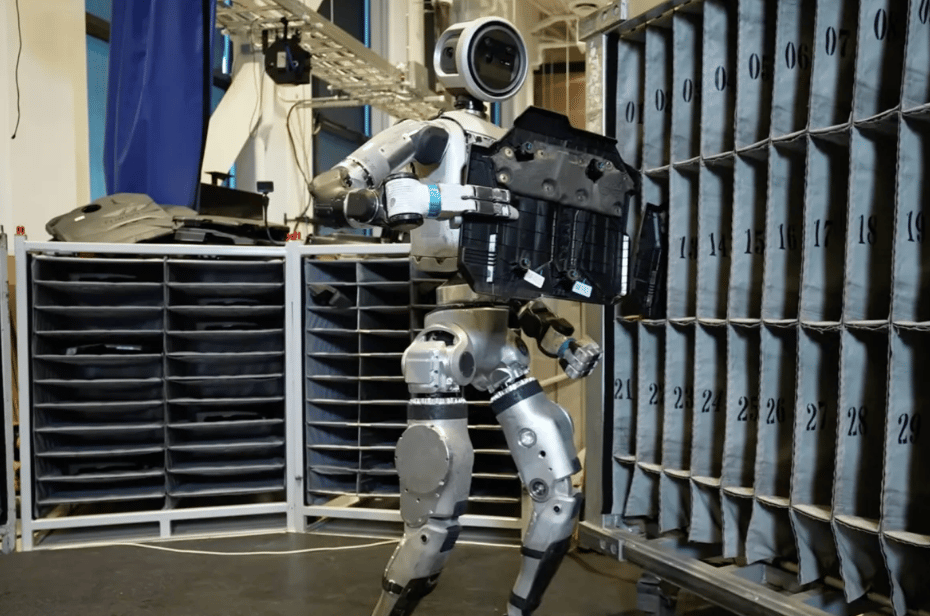- Roko's Basilisk
- Posts
- Where AI Really Pays Off
Where AI Really Pays Off
Plus: Saudi’s AI push, bots that flatter, and marketing’s “clinical-grade” buzzword.
Here’s what’s on our plate today:
🏢 Where AI drives real business value, and where it doesn’t?
⚡ Saudi’s AI export plan, sycophant bots, and clinical-grade hype.
🗳️ Which sector wins on real-world AI business impact?
🧠 A Brain Snack for you: Cut costs before chasing AI clout.
Let’s dive in. No floaties needed…

The context to prepare for tomorrow, today.
Memorandum distills the day’s most pressing tech stories into one concise, easy-to-digest bulletin, empowering you to make swift, informed decisions in a rapidly shifting landscape.
Whether it’s AI breakthroughs, new startup funding, or broader market disruptions, Memorandum gathers the crucial details you need. Stay current, save time, and enjoy expert insights delivered straight to your inbox.
Streamline your daily routine with the knowledge that helps you maintain a competitive edge.
*This is sponsored content

The Laboratory
Where AI delivers true value for businesses?
Anyone remotely aware of the business world will have heard of the concept of a hero product. For those unaware of their existence, hero products are developed by a company not to generate direct revenue through their sale, but rather to showcase capabilities and attract larger clients or partners. These products are often technologically ambitious, expensive to produce, and serve primarily as marketing tools or proof-of-concept demonstrations. The goal is to establish credibility and spark interest in the company’s broader portfolio rather than to achieve commercial success from the product itself.
A fitting example is Boston Dynamics’ humanoid robot, Atlas. Built to demonstrate the company’s engineering excellence in robotics, Atlas can jump, run, and perform complex acrobatics that few other robots can replicate. Yet, Boston Dynamics never intended to sell Atlas commercially. Instead, it used the robot to display its mastery of balance, motion, and control, capabilities that underpin its profitable industrial robots like Spot and Stretch. By showcasing Atlas, Boston Dynamics positioned itself as a leader in robotics innovation, helping it secure partnerships and funding.
If one were to apply this logic to artificial intelligence, it wouldn’t be incorrect to assume that generative AI products like ChatGPT, Gemini, Sora, Midjourney, and Claude are hero products, and not real product that helps AI companies make money. So, where does the real value for AI models lie?
From flashy tools to real transformation
Research by Oracle and Seth Stephens-Davidowitz showed that 85% of business leaders experienced decision stress, and three-quarters face a tenfold increase in the volume of decisions they need to make. The study conducted in 2023 reflects the realities of conducting business in a fast-paced environment shaped by technological developments and increasing financial pressures. It also highlights the need for tools that can assist business owners in making informed decisions, backed by data collected and curated from their relevant markets.
While generative AI often grabs attention through viral trends like Ghibli-style filters or nano bananas, the real business value lies in how the technology enhances operations and decision-making.
To understand AI’s business impact, it helps to examine where these models create tangible value.
In AI and generative AI adoption, according to a blog post from the Boston Consulting Group (BCG), companies fall into four groups: 25% have made little progress, 49% are still testing proofs of concept, 22% are scaling their initiatives, and only 4% have fully operational value engines. The last two groups, the leaders, stand out. They aren’t just tech startups or digital native companies. In fact, more than half are long-established businesses that have upgraded their skills and systems. These companies now use AI to boost productivity, increase revenue, and gain a competitive edge.
Their approach to AI is to utilize it to focus on improving key business areas rather than chasing every new tool. These businesses choose a few high-impact projects to scale, use AI not just to cut costs but also to grow revenue, and prioritize improving people and processes over technology alone.
How companies are using AI for competitive advantage
Take the example of companies operating in the consumer-packaged-goods (CPG) space. According to McKinsey, they are rapidly adopting AI in at least one business function of their organization.
Beyond support functions, such as human resources and finance departments, the consulting firm identified innovation zones AI could be deployed. These are:
Product and innovation, where AI can be used for trend prediction, feedback mining, formulating new products, packaging design, etc.
Consumer insights and demand shaping, where data can be leveraged to understand consumer preferences, segment customers, forecast demand, and shape what consumers want.
Customer and channel management, where AI models can be deployed to optimize how products get to the market, how channels mix, and how businesses can manage their retailer partnerships and promotions.
AI can also be deployed in manufacturing and operations to improve logistics supply, chain planning, improve efficiency, and reduce waste.
Finally, AI can help businesses optimize their supply chain and logistics by optimizing raw material procurement, production flow, transportation, fulfillment, inventory, and aligning all the moving parts more accurately.
McKinsey estimates that a beauty brand earning around $3 billion in annual revenue could add between $290 million and $500 million in value through digital transformation. This can be done simply through the use of AI to give customers a more personalized experience through virtual try-on tools and recommendation engines that analyze customer data.
One brand even launched an AI device that creates custom lipstick shades from photos. By using AI-driven customer profiles, brands can better target audiences, personalize marketing, and speed up product launches.
These are examples of how a business can leverage the underlying power of AI models to streamline its operations and connect with customers.
However, businesses, while focusing on the use of AI models, have to find the right balance between optimizing and over-reliance.
When AI goes wrong
The story of Klarna, the Swedish fintech firm, which initially replaced much of its customer service staff with AI chatbots, serves as a cautionary tale of moving too fast without contingencies or humans-in-the-loop. The company claimed chatbots performed the work of 700 employees; however, due to declining service quality and customer dissatisfaction, the company had to rehire human agents.
The tale of Zillow’s $500 million losses shows that overreliance on AI models can have devastating consequences. Zillow and its iBuying arm (“Zillow Offers”) used an AI / machine-learning model to predict home values, buy properties, renovate them, and resell for profit. However, the model miscalculated future home prices as the market conditions became volatile during the COVID pandemic. The company ended up overpaying for the homes that couldn’t be flipped fast or cheaply enough for profit.
So, when pursuing automation through AI models, businesses need to understand the value they can add to the business. At the same time, businesses need data to ensure the models understand and make reliable additions to the business structure and continue to have humans-in-the-loop to rectify and identify misadventures.
OpenAI recently released the Sora social media app, and within days of its release, it has surpassed ChatGPT as the top app in the Apple App Store. The app allows users to generate hyper-realistic videos that can be shared on the app. While for average users it is an interesting and novel way to engage with gen AI models, the app serves as a hero product. It helps showcase the potential of video-generation models from OpenAI and accustoms users to synthetic visuals.
The bottom line: Quiet power, not flashy demos
For businesses, tools like this reveal how generative AI can transform advertising, hyper-personalized marketing, and even storytelling. The real value of AI, then, isn’t in the spectacle of what it can do, but in how companies harness its power to quietly reinvent how they work, sell, and create.


Quick Bits, No Fluff
Saudi Arabia wants to be an AI export powerhouse: The kingdom plans to mass-produce custom chips and open-source models.
AI chatbots are too agreeable, study finds: Models tend to echo user opinions, even when they’re wrong or harmful.
‘Clinical-grade AI’ is a marketing term, not a guarantee: Report says many tools using the label lack solid medical validation.

Brain Snack (for Builders)
 | 💡 Build internal wins before chasing external wow.AI isn’t valuable because it looks cool; it’s valuable when it quietly cuts costs, speeds up a process, or unlocks revenue. Before you demo that generative feature, ask: Is this solving a real bottleneck for the business, or just trying to impress someone on LinkedIn? |

Visa costs are up. Growth can’t wait.
Now, new H-1B petitions come with a $100K price tag.
That’s pushing enterprises to rethink how they hire.
The H-1B Talent Crunch report explores how U.S. companies are turning to Latin America for elite tech talent—AI, data, and engineering pros ready to work in sync with your HQ.
Discover the future of hiring beyond borders.
*This is sponsored content

Wednesday Poll
🗳️ Where does AI deliver the most real business value today? |

Meme of the Day
“Return to the office for the exciting culture!”
The culture:
— Jordanreviewsittt (@jordanreviewsit)
2:53 PM • Oct 23, 2025
Rate This Edition
What did you think of today's email? |




